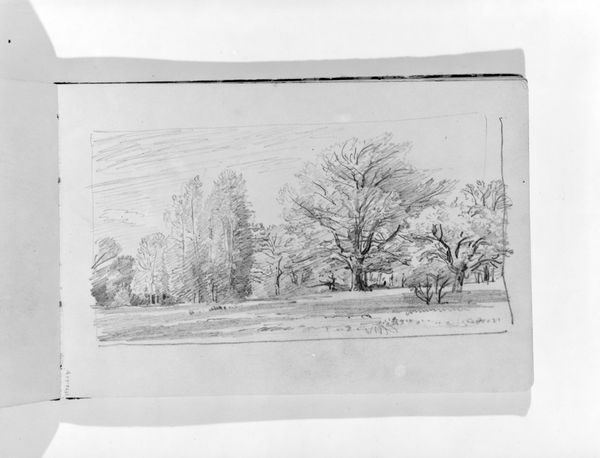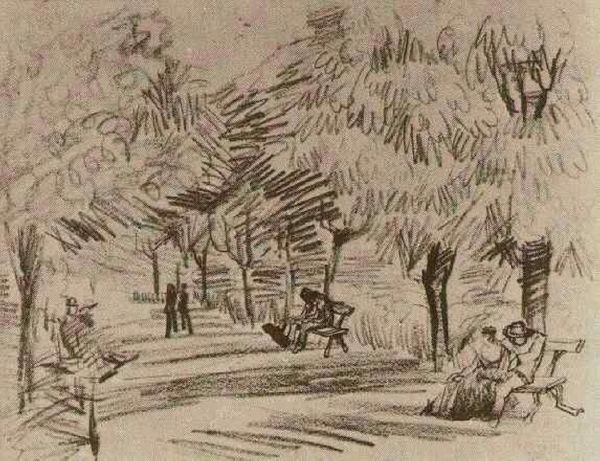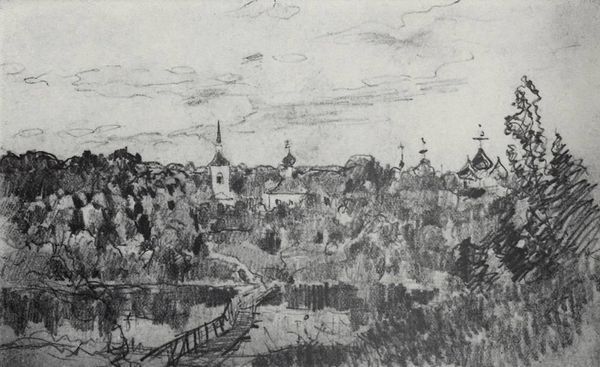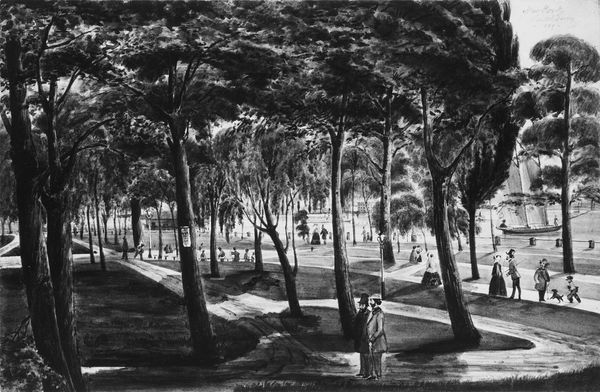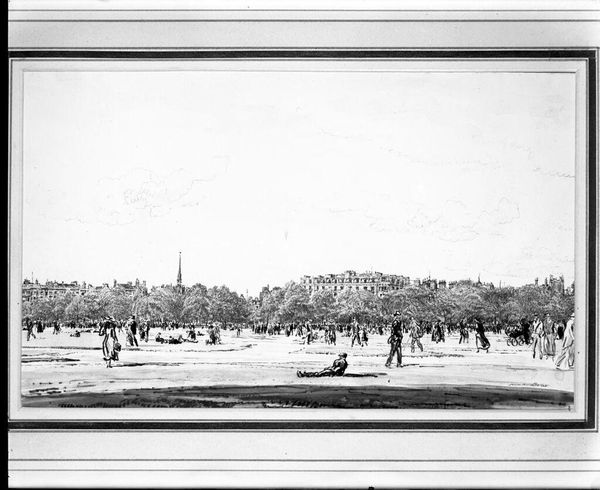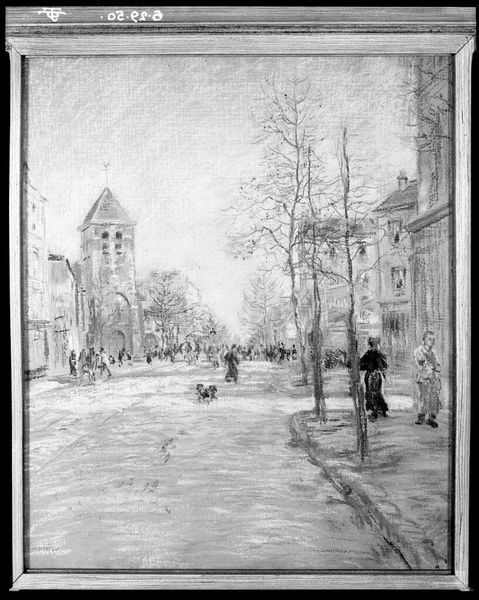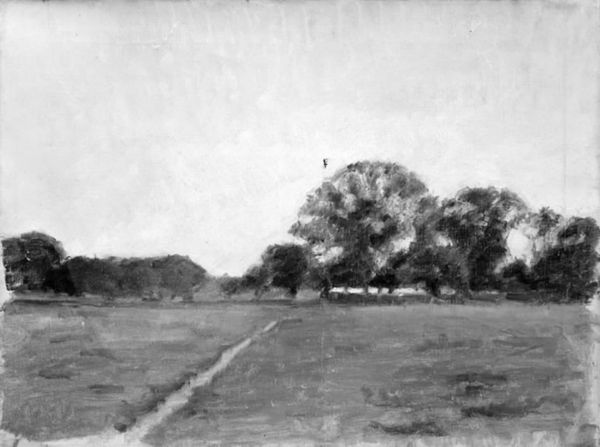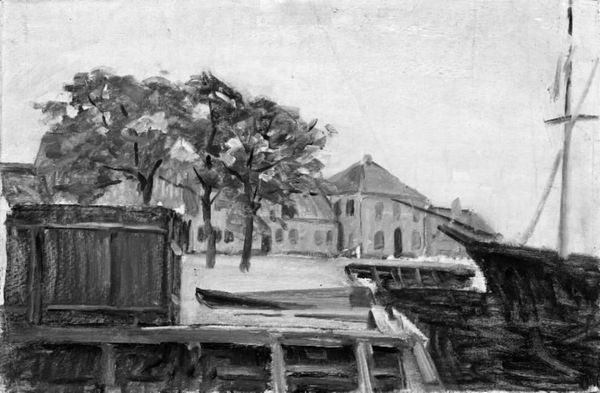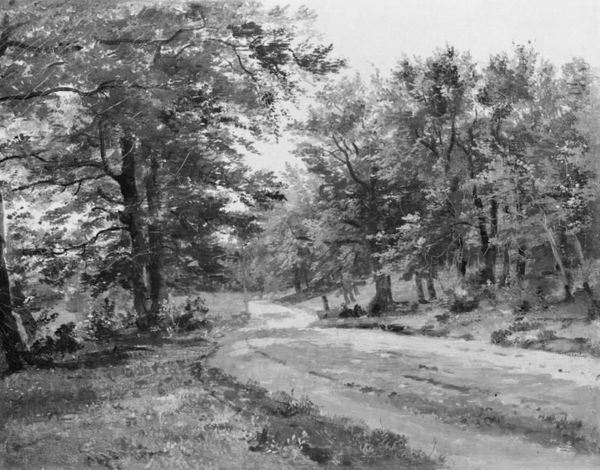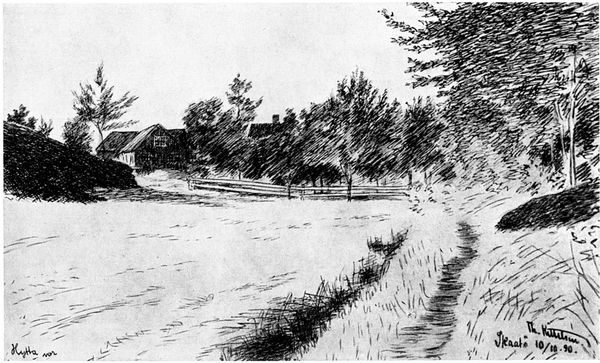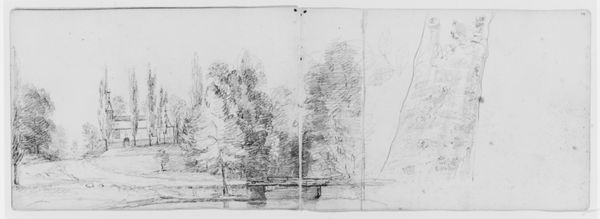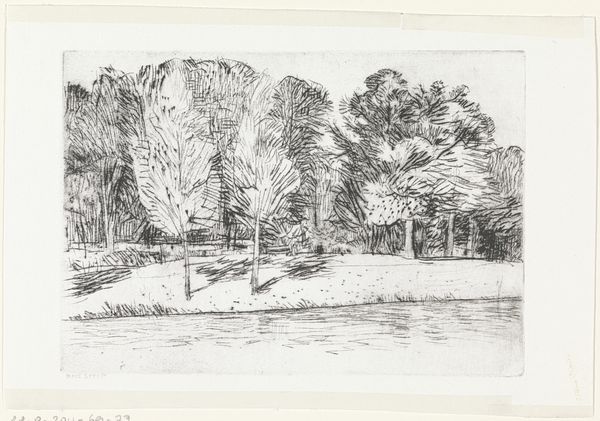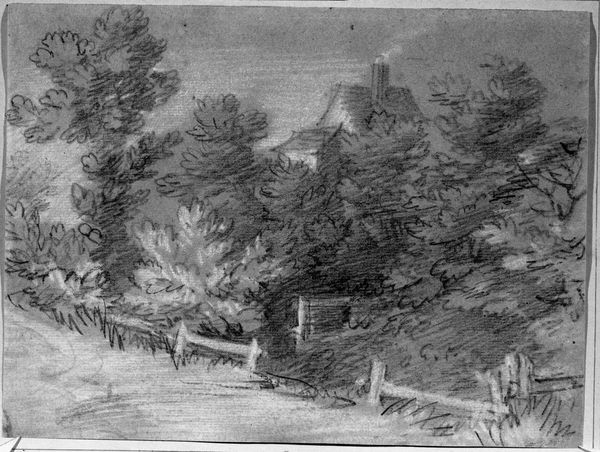
Dimensions: 51 cm (height) x 69 cm (width) (Netto)
Curator: Karl Schou painted this oil on canvas titled "Artillerivej. Forår" sometime between 1885 and 1914. What strikes you first about it? Editor: Oh, a definite stillness. It's got this subdued palette, almost monochrome, that mutes any sense of vibrancy you'd expect from springtime. The bare trees contribute, suggesting a kind of delayed arrival. Like spring is hesitant, almost shy, about revealing itself. Curator: Interesting. From a formalist perspective, the restricted tonal range—the interplay of greys and off-whites—serves to flatten the pictorial space, emphasizing the surface texture and the materiality of the paint itself. Look closely at the impasto in the foreground. Editor: Yes, I see that. The surface feels quite raw, like the first few tentative brushstrokes capturing the mood. Did he paint this "en plein air," I wonder? You can almost feel the cool air on your face. It looks to me that the paint shows us a fleeting, almost ghostlike view. Curator: The museum catalogue does suggest a plein-air approach. But also consider how the composition is structured. The arrangement of the trees, that somewhat centralized pathway…these elements work to guide the viewer’s eye into the depths of the cityscape. Editor: True. That distant spire punctuates the skyline, it really emphasizes a somewhat anonymous town scene with an impending industrial air about it. Almost as though spring is a shared collective event. The eye travels along the roadway from chickens and figures toward it, right? Curator: Precisely. And these recurring human figures provide the painting’s scale while the spire perhaps alludes to notions of progress, society, and the role of industry within the context of late 19th-century urban life. Editor: Well, progress also waits in the wings then. Given the overall mood, that is interesting. This piece almost turns landscape art upside down; an artist finding a little human warmth from his hometown. I dig it. What about you? Curator: For me, examining its formal qualities against the context of its creation has made it even more evocative. Thank you for pointing me back to what remains hidden!
Comments
No comments
Be the first to comment and join the conversation on the ultimate creative platform.

